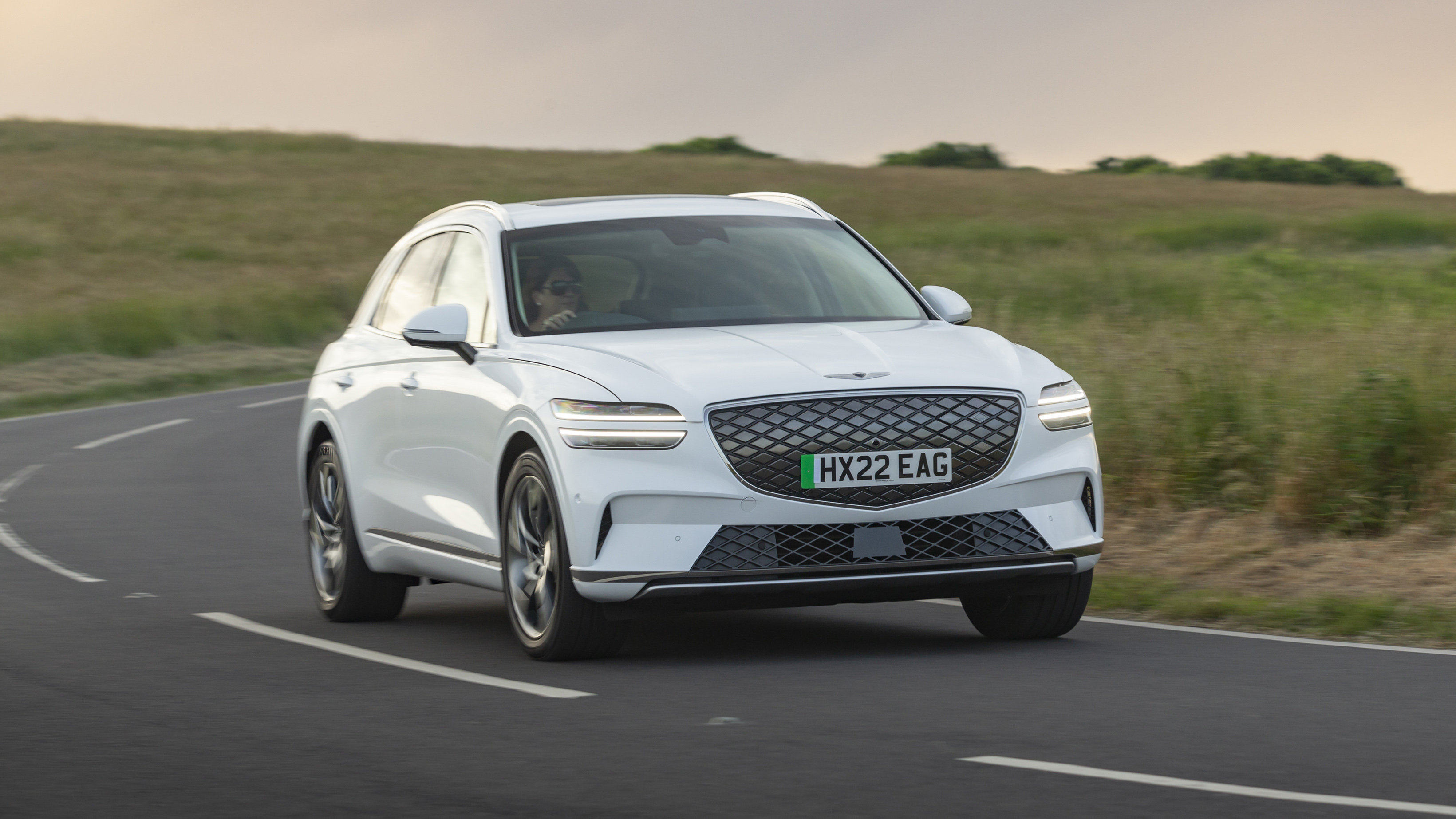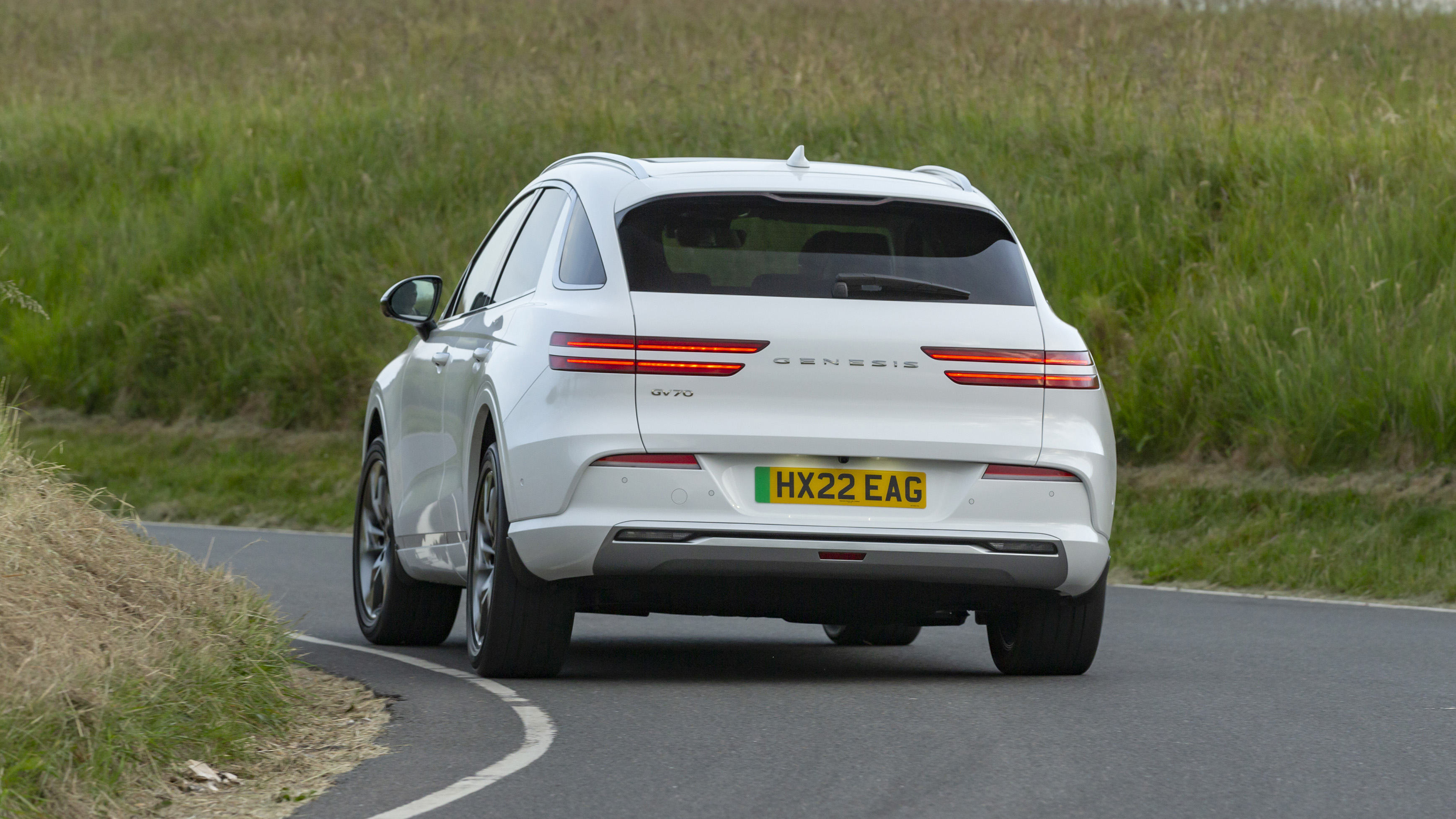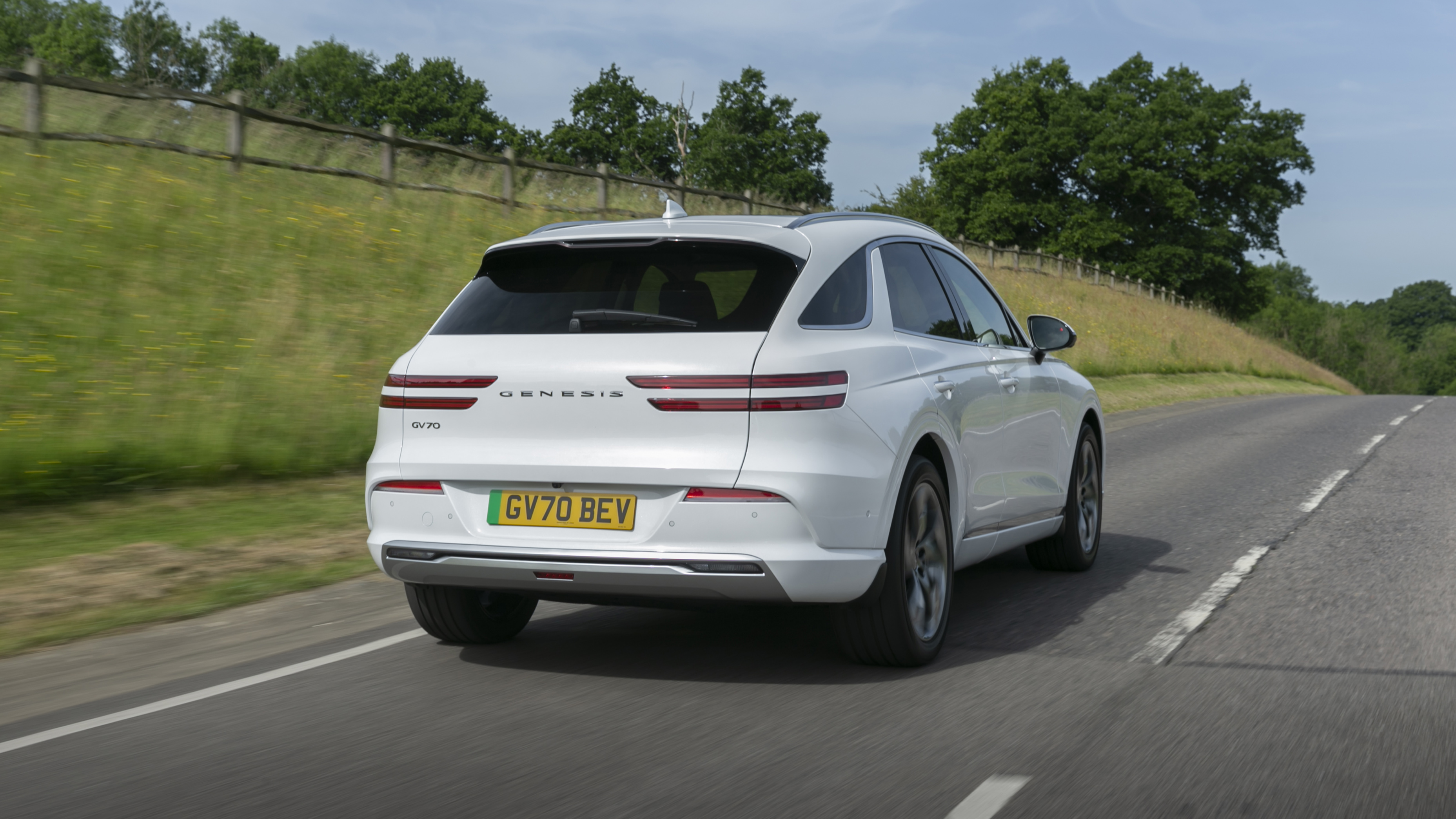
Genesis GV70 Electrified review: BMW iX3 and Merc EQC rival driven
£73,220 when new
What’s this, then?
This is the third electric car to be launched by Genesis, following on from the GV60 and G80. Genesis, in case you’re unaware, is the posh branch of the Hyundai Motor Group (think what Lexus is to Toyota), but while the petrol and diesel GV70 have been with us for around a year, it’s only now that the battery-powered version has joined the party, in keeping with Genesis’ plan to phase out combustion-engined cars by 2025.
You’d be hard pressed to tell it apart from the regular GV70 on looks alone mind. It’s an acquired taste, albeit not quite as bold as some of the groundsheet EVs out there. Indeed, the only electrification clues are the grille, which is now closed off and features a hidden hexagonal-shaped charging door/port, aerodynamically optimised wheels, and a tailpipe-free rear bumper. It all adds up to a fairly impressive drag coefficient figure of 0.29Cd.
I see. What are the headline stats?
Well, it’s available in one iteration only, a dual-motor setup that mates a 483bhp electric motor to a 77.4kWh battery. Genesis claims 0-62mph in just 4.2 seconds (in Boost mode) and a top speed of 146mph, plus up to 283 miles of range on a single charge.
Other talking points include 350kW ultra-fast charging, meaning 10–80 per cent is possible in 18 minutes if you can find a plug capable of those speeds, as well as V2L (vehicle to load) capability, so you can power a coolbox, coffee machine, e-bike and suchlike.
Hold on, what’s that Boost mode all about?
You’re on the ball today, aren’t you? For normal day to day driving, you’ll have to make do with 429bhp. The extra power is only unlocked when you hit the ‘Boost’ button on the steering wheel, which gives you access to the full 483bhp for a 10-second burst.
Pressing the go-faster button (it’s a little bit like Hyundai’s N mode button, though slightly more subtle in style) also gives you racing red dials and lighting in the cabin, as well as pumping up the driver’s seat side bolsters to pin you in your seat, because racecar.
What’s the point?
It’s really only there for joining motorways/overtaking, or if we’re being cynical, little more than a party trick to entertain your passengers.
Indeed, it’s not as if the GV70 is underpowered during regular driving with its zero to 62mph time only six tenths slower. We suspect that once you’ve got over the initial thrill, you’ll only use Boost mode sparingly. Nice to have though, eh?
What’s it actually like to drive then?
Even in ‘normal’ mode the acceleration is impressive, particularly when you consider that this variant weighs in at 2,310kg due to the electric gubbins – a sizeable jump over the ICE model’s sub two-tonne kerbweight. It’s a bit of a porker, and feels it.
Still, the steering is nicely weighted and it handles well enough with little roll through corners, helped by the low centre of gravity. The ride is slightly on the firm side, mind – we’d advise sticking with the standard fit 19-inch alloys over the optional 20-inchers.
Top Gear
Newsletter
Thank you for subscribing to our newsletter. Look out for your regular round-up of news, reviews and offers in your inbox.
Get all the latest news, reviews and exclusives, direct to your inbox.
The cabin itself is impressively well insulated, while our test car also came fitted with the £990 Lexicon sound system complete with road noise cancelling technology, which works by playing inverted sound waves through the speakers to counteract road noise. We found it a highly impressive bit of kit, particularly at speeds up to 50mph, and well worth considering.
On a mildly cold winter’s morning, a full charge showed as 220 miles, while we saw 3.0mpkWh over the course of 115 miles, consisting of both stop/start traffic around town and higher motorway speeds. As ever, expect that to climb slightly in warmer temperatures.
Are there any differences inside?
Very little. It certainly looks the part and feels well built, while Genesis has added to the eco image by using various recycled materials – the headlining has been made using old plastic bottles and waste nets, for example. There’s also a unique Ocean Wave / Glacier White colour scheme – good luck keeping it looking factory fresh with the kids in tow.
The paddles on the steering wheel are now used to adjust the level of regenerative braking, while the impressive 14.5-inch widescreen features a new electric menu display showing battery charge, remaining range and, handily, nearest charging point.
The only other real difference is in the boot, where you only get 503 litres of space compared to 542 in the petrol and diesel variants due to the batteries, not that you’d likely notice on the weekly supermarket run. You do claim some of the space back via the 22-litre frunk, which is just about big enough to store any dirty charging cables.
Anything else I need to know?
Genesis’ big plan is to put customers first and foremost, which means you get the same treatment as you would with any of its other models. It now offers test drives from your home or office, and it’ll assign you your own personal assistant if you decide to buy.
Once you’ve bought the car, you get a five-year warranty, five years of complimentary roadside assistance, five years of servicing where Genesis will collect your car, drop off a courtesy car and then return it once everything is complete, and free over-the-air updates. In the case of the Electrified model, you also get subsidised Ionity charging rates and a free home wallbox worth £1,125. It takes the hassle out of car buying, no doubt.
Interesting. How much does it cost?
Well, here’s the elephant in the room – where the internal combustion models start from £41,475, this variant starts from a rather eye-watering £64,405, a tough sell up against more established rivals including the likes of the BMW iX3 and Mercedes-Benz EQC, which are priced from £64,165 and £74,330 respectively. We can’t help but feel that Genesis is putting itself out of reach of some buyers by not offering a cheaper entry-level single motor variant, but that’s arguably what its Hyundai Ioniq 5 and Kia EV6 group stablemates are for.
Indeed, for anyone looking to make the jump from ICE to electric there are surely fewer easier routes, particularly given that there is just the one mid-range trim level (Sport) and one battery/motor combo available. Whether you can get on with the looks remains subjective, but the GV70 feels far better suited to electric drive than the alternative petrol or diesel engines available, with the attractive ownership proposition the icing on the cake. If you can make the sums work, the battery-powered GV70 is the one to go for, we reckon.
Featured

Trending this week
- Car Review
BMW 1 Series
- Top Gear's Top 9
Nine dreadful bits of 'homeware' made by carmakers






